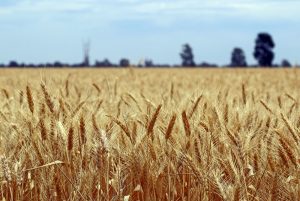The South China Morning Post (SCMP) reported on November 3 that China is set to ban imports of Australian wheat. This ban, if it was to eventuate, will add to a host of other Australian commodities and products exports, including coal, barley and red wine, that China has imposed curbs on, as relations between the two countries inch towards its nadir. “Australian wheat exports to China had already faced a threat in September when China customs said it would increase checks and carry out tests on shipments,” the SCMP notes. Canberra’s decision to push for an independent international investigation around the novel coronavirus has particularly earned Beijing’s ire. Australia has also doubled down on the need for a continued rules-based order in the Indo-Pacific, recommitting itself to its alliance with the United States and partnerships with key regional powers such as Japan and India as well as ramping up its defense budget commitments.
An Australian Broadcasting Corporation report around increasing Chinese pressure on Australian imports yesterday had noted that while China has officially halted trade around key goods from Australia – such as lobster – due to ostensible biosecurity and other commercial concerns, “the mounting list of Chinese trade punishments has reinforced suspicions in Canberra that Beijing remains intent on using trade sanctions to damage Australia’s economy.”
China is Australia’s largest trading partner. In 2019, Australia’s exports accounted for 34.3 percent of the country’s total, valued at more than 169 billion Australian dollars. The Perth USAsia Centre, a think tank with the University of Western Australia, has estimated that the exports worth 47.7 billion Australia dollars to China stood to be affected by the growing trade tussle between the two countries. But Australian commodities and goods are not the only exports that China has sought to punitively curb. Tourism and education for Chinese citizens in Australia also stand to be affected if Beijing continues to use trade and economics as a hammer to secure geopolitical compliance from Canberra.
Robert Blackwill and Jennifer Harris in their 2016 book on geoeconomics formally defined it as the use of economic and financial tools by a state to advance its foreign policy goals. They described China as the “world’s leading practitioner of geoeconomics,” quoting an observer who noted that “[n]ations do not fear China’s military might; they fear its ability to give or withhold trade and investments.” What is interesting is how China’s economic statecraft has grown more sophisticated since, where Beijing is also using trade as means to drive a wedge between allies or pitch one against the other.
As the SCMP report notes, one of the reasons why China can afford to ban import of Australian wheat is that as it seeks to conclude the first phase of its trade deal with the United States struck in January this year, it agreed to purchase an additional $32 billion dollars of U.S. agricultural products — including wheat, whose sale to China is now almost at a five-year high — even as China has increased its wheat stockpile in the last few months from other sources including France and Canada. (The United States is the world’s second largest wheat exporter, after Russia.) This means that Chinese wheat imports have become a zero-sum game between American allies: The United States’ and others’ gains are, effectively, at the expense of Australia’s losses.
In the recent past, similar dynamics have played out in unexpected ways.
As an example, Vietnam has recently come into the Trump administration’s crosshairs over alleged currency manipulation. That practice would allow a country to keep prices of its exports artificially depressed while raising the price of imports. This, in turn, would lead to a growing trade balance in favor of the country manipulating its currency. As Vietnam’s trade balance with the U.S. has grown, the Trump administration – with its obsessive focus on that numerical measure – has targeted Hanoi.
But, as my colleague Sebastian Strangio recently wrote, as American manufacturers, bearing the brunt of the U.S.-China trade war, relocated out of China and into other countries, including Vietnam, “attempts to depress China’s trade surplus with the U.S. have … helped inflate Vietnam’s,” in turn angering Trump and bringing about the currency-manipulation investigation. In effect, albeit in a limited way, China has managed to turn the U.S. against Vietnam – aided by Trump’s obsessions as well as externalities of its trade war with the U.S. — at a crucial time when Washington seeks closer political-military ties with Hanoi.
Something roughly analogous is at play here when it comes to China’s import of Australian wheat. While that produce is not a key Australian export, the net effect of China first stockpiling on wheat from U.S. and allies and then banning wheat imports from Australia makes the former’s gains look like they come at the latter’s expense.

































